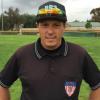- 0
Expanded Strike Zone for Little League
Umpire-Empire locks topics which have not been active in the last year. The thread you are viewing hasn't been active in 3181 days so you will not be able to post. We do recommend you starting a new topic to find out what's new in the world of umpiring.
-
Similar Content
-
- 21 replies
- 2,763 views
-
- 11 replies
- 1,853 views
-
- 94 replies
- 10,353 views
-
- 7 replies
- 1,400 views
-
- 12 replies
- 1,627 views
-







Question
Guest Brian Murphy
I am a little league coach for 10-12 year olds and I have a philosophical difference with the head umpire in our league and I want to get the opinions of those on the boards here. Recently our kid umpires (our league does not use adults for this age contrary to little league rules, but that's ok) stated telling us coaches during the pre-game meeting that "their" strike zone is from the armpits to the tops of the knees and a baseball's width on the inside and outside of the plate. My objection is that they are not enforcing the strike zone according to the rules of the game and they are giving the pitcher an unfair advantage over the hitter. Our league has a sheet of "local rules" and it does NOT say there is an expanded strike zone for this age. I ask why they are not enforcing the rules of the game and I get a BS answer about encouraging kids to swing and that they don't want a "walk fest."
My argument is that
1) the strike zone is clearly defined in the rule book
2) "encouraging" kids to swing is not the umpires job, that's a coaches job to teach the kids strike zone discipline
3) we as coaches are fully capable of removing a pitcher who has walked a few batters and that's not the concern of the umpire
4) an expanded strike zone only encourages kids to swing at more bad pitches, causing mor swinging k's and backwards k's
5) and umpires job is to Officiate the game fairly according to ALL the rules, not most of them
6) umpires cannot unilaterally decide to make up their own rules
Now I am catching hell because I am questioning this "unwritten" expanded strike zone philosophy and all I am asking is for all of our umpires to call the strike zone according to the definition in the rules!! Is this an unreasonable request?
Link to comment
Share on other sites
Top Posters For This Question
10
9
7
6
Popular Days
May 10
35
Jun 16
10
May 13
9
Jul 16
8
Top Posters For This Question
JHSump 10 posts
RichMSN 9 posts
grayhawk 7 posts
BigUmpire 6 posts
Popular Days
May 10 2013
35 posts
Jun 16 2013
10 posts
May 13 2013
9 posts
Jul 16 2013
8 posts
Popular Posts
BigUmpire
Guest_Brian Murphy Strap on the gear and call at least 50-75 games in age groups from 10U to HS. Come back with the same question. Respectfully Submitted- BigUmpire
Aging_Arbiter
Note** Not every LL field has lights.............. The game is called baseball..............not baseonballs
HokieUmp
In response: 1. And as someone answered, the LL book defined the zone about like this 'expanded' one. So it looks like you ARE getting the zone 'as defined in the rule book.' 2. Our encouragem
139 answers to this question
Recommended Posts